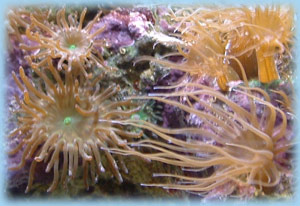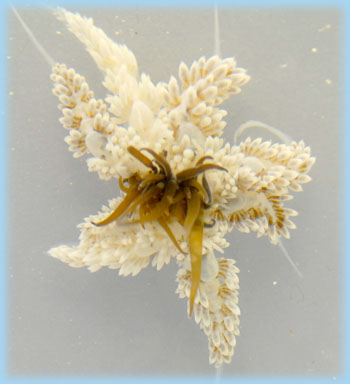Welcome to our Berghia Nudibranch Q&A, we have listed our most commonly asked questions for your convenience.
Jump to:
- Why buy your Berghia from Salty Undergorund?
- Do Berghia eat anything besides Aiptasia Anemones?
- Do Berghia eat Majano Anemones?
- Are Berghia Nudibranch reef safe?
- How big are adult Berghia?
- Predators of the Berghia Nudibranch
- Are Berghia 100% effective all of the time?
- How many Berghia do I need?
- What happens to Berghia when the Aiptasia Anemone are gone?
- Will the Berghia eat any size Aiptasia?
- Will I see my Berghia in my aquarium after they have been introduced?
- How do I acclimate my Berghia Nudibranchs?
- Can I handle Berghia using my hands?
- How big do Berghia Nudibranch grow?
- How long do Berghia live?
- Are these Nudibranchs a different species from the Zoanthid-eating nudibranchs?
- How often do Berghia eat?
- How long will it take for the Berghia to clean my aquarium of Aiptasia anemones?
- If my Berghia lay eggs, will they hatch?
- Do you guarantee live arrival?
- Is there a box charge?
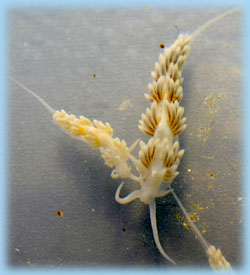
If you do not find the information you're seeking on this page
call or e-mail us using the Contact Us page.
Why buy your Berghia from Salty Underground?
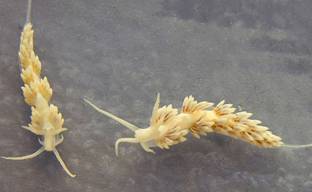
- Guaranteed live arrival or your money back on overnight shipments
- 99.9% live arrival success rate
- Premium Aquacultured Berghia grown at our facility
- Berghia transfer pipet included free with your order
- Customer service available 5 days a week
- Over 15 years of experience and proven track record
Are Berghia reef safe?
Yes. Berghia nudibranchs will not harm any live coral or saltwater aquarium livestock.
How big are your adult Berghia?
Our adult Berghia are at least 1/4" up to about 3/4" in length at the time they are shipped depending upon the size you purchase. They are all laying good quality eggs at the 1/2" size. Berghia can reach a total length of about 1-1/2" to almost 2 inches".
We ship the largest adult Berghia nudibranchs we have available. Berghia are relatively small creatures compared to most things we put in our marine aquariums. It's common for them to lose some size in shipping as well. So some berghia nudibranchs may look small when they arrive at your door, especially if they are balled up rather than stretched out. The Berghia will regain their normal size after they begin to eat aiptasia in your aquarium.
Are there any predators to Berghia nudibranchs?
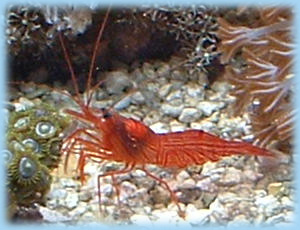
Please keep in mind there are times when saltwater livestock considered "reef safe" do not act as expected. But, generally speaking, the marine livestock below are those you should be most concerned about when adding Berghia to your reef aquarium.
Any saltwater fish that aggressively hunts the live rock at night for food other than algae, including some Wrasses, Butterflyfish and some Dottybacks. It's hard to predict marine fish behavior. As a general rule if your saltwater fish spends a lot of time "hunting" your live rock on a regular basis, especially at night, it is suspect for hunting Berghia nudibranchs also.
Shrimp that scavenge at night: Peppermint shrimp are the worst, also Coral Banded shrimp and possibly Camel shrimp (does not include Cleaner or Fire shrimp).
Aggressive crabs that scavenge for food: Sally Lightfoot crabs, Arrow crabs, Pom Pom crabs, live rock crab hitchhikers and Emerald crabs that have no algae to eat (does not include Emerald crabs with algae available to eat or any Hermit crabs).
Also, Aiptasia anemones may eat a Berghia nudibranch if it is accidentally dropped directly into the Aiptasias mouth area. So be careful when adding them to your aquarium.
Need Help Removing a potential Berghia predator?
Are Berghia 100% effective all of the time?
Berghia are sea slugs. This means they do best in good aquarium conditions, with good water quality (under 25ppm of nitrates, 0 ammonia and 0 nitrites), a lack of predators and slower or medium water current that allows them to cling to the live rock while moving from one Aiptasia anemone to another.

If you have 40 or more Aiptasia anemones in your saltwater aquarium it is a good idea to have enough Berghia so they can find each other to mate. Two Berghia must fertilize each other to get fertile eggs. The eggs may hatch and new Berghia continue to populate the aquarium making the Aiptasia anemones disappear at a much faster rate. Successful Berghia reproduction sometimes happens in display aquariums but not all of the time.
There is a chance that the Berghia will not find all of the Aiptasia anemones before they die off. Berghia usually eat the smallest Aiptasia first and move on from there. So, at first you may not notice much reduction the aiptasia population in your saltwater aquarium.
Berghia are nocturnal eaters. If you find a Berghia in the tank during the day, chances are it is having a hard time finding an Aiptasia anemones to eat. If possible, turn off your pump and powerheads in your aquarium, then use a pipet or other small suction device to move the Berghia close to an Aiptasia anemone.
If you only have 6 or 8 Aiptasia in a larger aquarium, we do not recommend using Berghia aiptasia control. The Berghia may starve before they can find all of the aiptasia in your reef aquarium. We recommend using Berghia nudibranchs for a moderate to heavy Aiptasia control.
How many Berghia do I need?
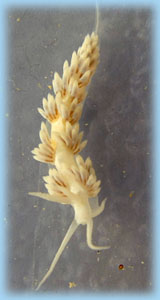
We recommend at least 8 Berghia per 100 gallons of water for a moderate Aiptasia problem (50-100 aiptasia per 100 gallons). Getting the right number of Berghia is important. You want to have enough Berghia in your saltwater aquarium so they can find each other to mate and lay eggs. The nudibranch eggs may hatch and continue to populate the aquarium until the Aiptasia anemones are gone. Use the adult Berghia calculator below to help estimate the number of Berghia you need for your aquarium. Very heavy Aiptasia outbreaks may require even more Berghia nudibranchs to get ahead of the aiptasia reproduction.
What happens to the Berghia when the Aiptasia anemones are gone?
Berghia nudibranchs will starve to death if they have not eaten any aiptasia in around 5-7 days.
Berghia are nocturnal animals. If you see one during the day, chances are it is having a hard time finding an Aiptasia to eat.

Berghia nudibranch coloring will also indicate if they have not eaten Aiptasia in the previous 48 hours. The berghia will look completely white or off-white in color if they have not eaten any aiptasia anemones. (If the berghia has eaten aiptasia they will have a darker brownish color.) If possible, use a pipet or other small suction device to move the Berghia close to any remaining Aiptasia. If all of the aiptasia is gone, carefully suction them up and pass them on to a friend. Otherwise, the nudibranchs will starve.
Will I see the Berghia in my aquarium after they have been introduced?
Berghia are nocturnal animals. The best time to spot them is at night using a flashlight. They are hard to find, so don't be surprised if you don't see them.
Note that Berghia are not aquarium pets that you buy for the enjoyment of their company like you do with fish or some other invertebrates. Chances are you will not see much of your Berghia once introduced into the aquarium.
How do I acclimate my Berghia nudibranch?
Please click here to go to the Acclimation Instructions</a > page.
Can I handle the Berghia using my hands?
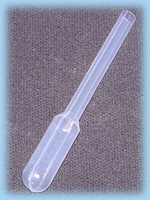
Berghia nudibranchs are small and fragile sea slugs. We do not recommend handling them with anything other than the Berghia pipet or other small suction device, like a turkey baster that has been used only in your aquarium.
To what size do the Berghia nudibranchs grow?
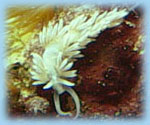
Berghia typically grow to about 1 1/4" to 2” in size.
The adult Berghia are usually about 1/4"-3/4” in size when we ship them and are laying eggs. They may appear a smaller when they arrive after shipping. They will regain size after acclimation and eating.
How long do Berghia live?
Bergia Nudibranchs live about 10 to 12 months as long as they have Aiptasia anemones to eat. Most adult berghia are about 2 months old when they ship. Usually they die of starvation after all aiptasia have been eaten, not of old age.
Are these nudibranchs a different species from the Zoanthid eating nudibranchs?
Berghia nudibranchs are not the same species as those that eat Zooanthid corals. Berghia eat only Aiptasia anemones. Berghia are not a typical nudibranch hitchhiker either.
How often do Berghia eat?
Berghia will eat an aiptasia every one to two days. They can go up to 5-7 days without eating before they die. But we don't recommend testing this with your Berghia nudibranch.
How long will it take for the Berghia to clean my aquarium of Aiptasia anemones?

It depends on the number of Berghia nudibranchs in the aquarium, the size of your reef aquarium and degree of the Aiptasia problem. We recommend at least 8 Berghia per 100 gallons of water for a moderate Aiptasia problem (50-100 aiptasia per 100 gallons). It takes about 2-3 months for the Berghia to clean the aquarium if you use this formula. It may take a few weeks before you begin to see a difference in the Aiptasia population.
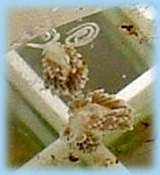
If my Berghia lay eggs, will the eggs hatch?
Yes, assuming water conditions are right in your tank and the eggs are not eaten by scavengers. It takes about 4-6 weeks from the time the eggs are laid to the time you will be able to see the new Berghia well with the naked eye. Your first tip off may be that you notice the Aiptasia disappearing more quickly, or you can count more Berghia in your aquarium than you bought.
Do you guarantee live arrival?

We guarantee live arrival on overnight shipments only. The guarantee covers the value of the Berghia nudibranch. The shipping charges are not included in the guarantee.
Read more about our Guarantee in the Live Arrival Guarnatee page.

